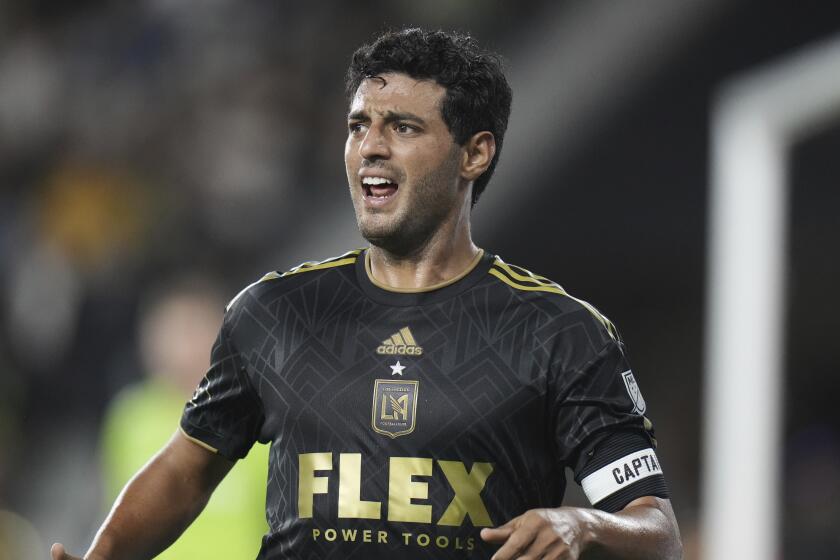A consumer’s guide to the best and worst of sports media and merchandise. Ground rules: If it can be read, played, heard, observed, worn, viewed, dialed or downloaded, it’s in play here.
- Share via
What: “Fists of Freedom: The Story of the 1968 Summer Olympics”
Where: HBO
When: Thursday, 10-11 p.m.
It was a brief moment in time, two athletes raising black-gloved fists on the victory stand at the 1968 Summer Olympics in Mexico City to protest racial injustices in the United States. But it was one of the most important moments in sports history in this century, possibly one of the century’s most important moments, period.
And HBO rises to the occasion with an outstanding one-hour documentary. HBO earlier this year won a Peabody Award for “its ongoing and consistently superb series of documentaries,” and “Fists of Freedom” may be its best. It’s Bud Greenspan-quality, which is the highest of compliments.
The events that led to Tommie Smith and John Carlos raising their fists after finishing first and third in the 200 meters are examined in depth. The athletes were sent home, amid criticism from white media representatives, when actually, as time has shown, they were heroes, Smith in particular.
But Smith, who grew up in humble surroundings on farmlands around Lemoore, Calif., and is now coaching track and teaching physical education at Santa Monica College, hasn’t been treated like a hero.
Greenspan, the award-winning Olympic documentarian who was among the dozens of people interviewed, says near the end, “I was one of those who said, ‘My God, who do these guys think they are?’ Three decades later these guys proved to be correct. It opened everybody’s eyes.”
U.S. sprinter Larry James says, “Two simple athletes who ran in circles captured the entire world for a brief moment.”
After a boycott movement led by black activist Harry Edwards fizzled, other ways of demonstrating were discussed. When no one method could be decided on, it was left to each athlete.
Smith had his wife bring him two black gloves. He gave one to Carlos as they approached the victory stand. What they did was a peaceful demonstration, but the International Olympic Committee and its leader, Avery Brundage, reacted as if they’d blown up a building.
Lee Evans, the 400-meter gold medalist, was a leader in the movement, as was Smith.
Evans and his U.S. teammates in the 400, after a 1-2-3 sweep, chose only to wear black berets on the victory stand. It was called a “watered down” protest compared to what Smith and Carlos did. They also smiled on the stand.
Says Evans, “People asked me, ‘Why were you guys smiling so much?’ And I said, ‘Man, some guy was threatening to shoot me. I smiled because I thought maybe they wouldn’t be able to shoot a guy who was smiling.’ That’s the only thing that was on my mind on the victory stand--being shot dead.”
More to Read
Go beyond the scoreboard
Get the latest on L.A.'s teams in the daily Sports Report newsletter.
You may occasionally receive promotional content from the Los Angeles Times.










